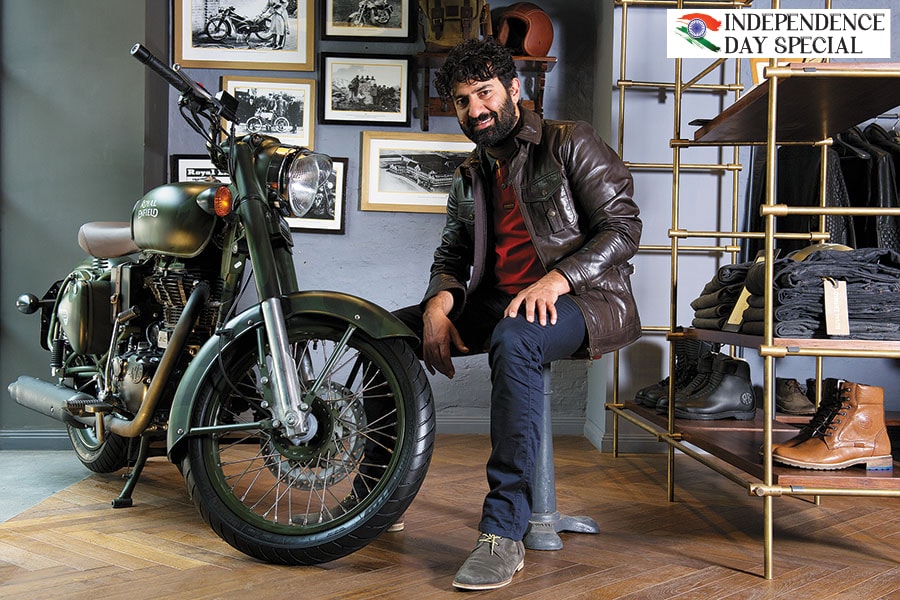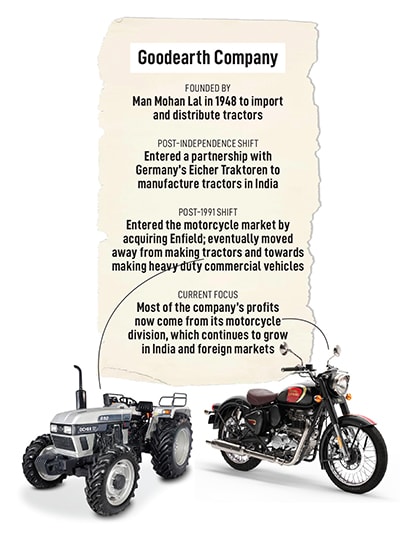Eicher Motors Ltd: A journey of successful turnarounds
The Lals have remained a family of maverick pioneers against severe odds, from being the first Indian tractor makers to dominating the premium motorcycle segment
 Siddhartha Lal, chief executive officer and managing director of Eicher Motors Ltd. Image: Amit Verma
Siddhartha Lal, chief executive officer and managing director of Eicher Motors Ltd. Image: Amit Verma
When India became independent, its economy was mostly agrarian, with farmers dependent on traditional, manual methods of farming. It was at a time like this when Man Mohan Lal set up Goodearth Company to import and distribute tractors in 1948. Given the precarious nature of the country’s economy, and the earnings the vast majority of farmers generated, between 1952 and 1957, the company sold 1,500 tractors in India.
Despite numbers that can look meagre in current times, in 1958, Goodearth entered a seven-year partnership with German tractor makers Eicher Traktoren to manufacture the farm vehicles in India. The company was renamed Eicher Tractor Corporation of India Limited, and became the first tractor maker of the country.
The following year, it rolled out the first indigenously built tractor from its Faridabad factory for the Indian market. In 1960, the company was renamed Eicher Tractors India Limited, and, over the next 15 years, it achieved 100 percent indigenisation of its manufacturing process. It was also during this period, in 1966, that Man Mohan Lal’s son, Vikram, joined the family business.
The 1980s saw Eicher Tractors pull off a feat that few Indian companies could even dream of in those days: Eicher Tractors India, then with a revenue of around Rs 80 crore, acquired the parent German Eicher Traktoren, which was reeling in an economy stricken by depression. Armed with loans from foreign banks, Vikram—who had studied mechanical engineering at the Technische Universität Darmstadt and had been an apprentice at Eicher Traktoren for two years—invested Rs 2 crore to rescue the parent company.
Eicher Motors Limited was incorporated in 1982, and Vikram established an assembly line in Germany with components imported from India. He aimed to export Rs 50 lakh worth of components to Germany in 1985, increasing the volume over the coming years. What Vikram achieved established not just his company’s credentials, but also that of Indian manufacturing.




 Sales were low—about 2,000 units a month—compared to a production capacity of 6,000, and the bike was plagued with reliability issues. The management at Eicher Motors did not see much value in the vertical, but Siddhartha asked his father for two years in which to turn the company around.
Sales were low—about 2,000 units a month—compared to a production capacity of 6,000, and the bike was plagued with reliability issues. The management at Eicher Motors did not see much value in the vertical, but Siddhartha asked his father for two years in which to turn the company around.













